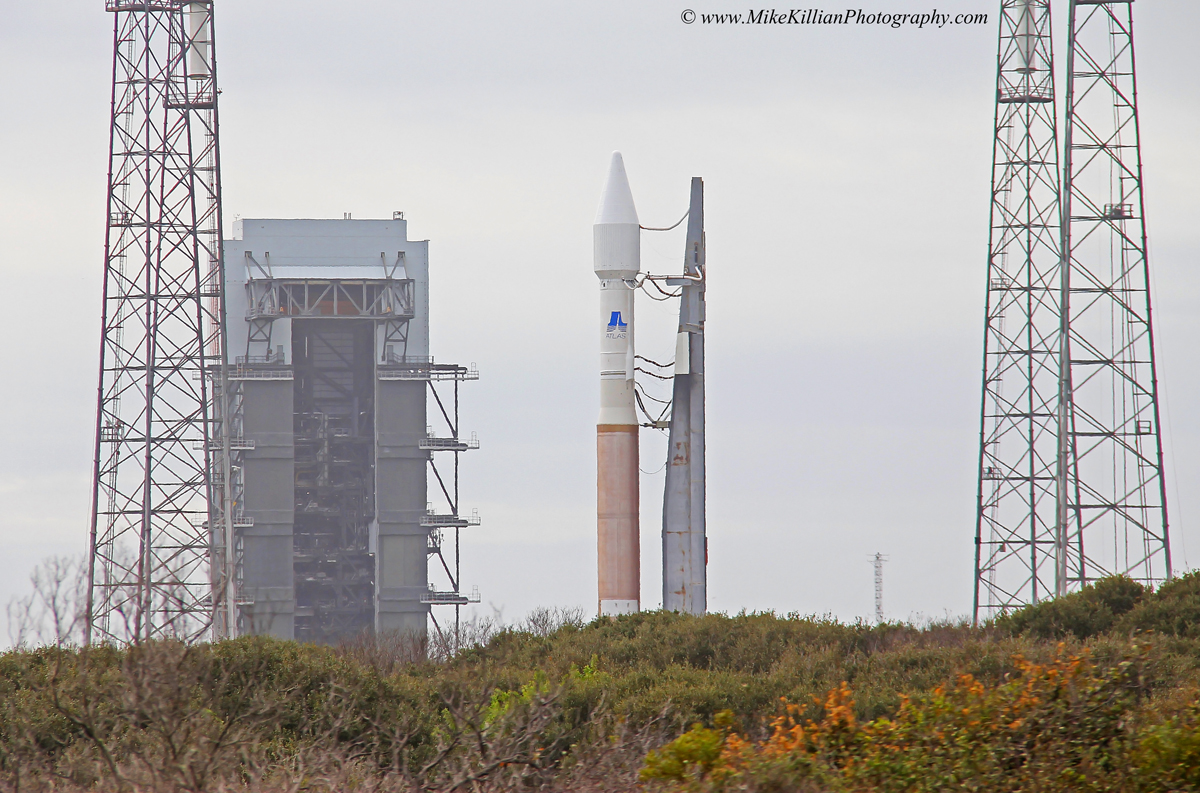
The clocks are ticking and the launch team at Cape Canaveral Air Force Station Launch Complex 41 in Florida is preparing to send NASA’s next Mars-bound spacecraft on an epic half-billion mile journey to reveal the secrets of the Red Planet’s climate history. The $620 million Mars Atmosphere and Volatile Evolution mission, or MAVEN, is the first of its kind devoted entirely to understanding the upper atmosphere of Mars, which will shed light on questions about where the water that once covered the planet went, and why it—along with the planet’s atmosphere—has disappeared.
MAVEN’s ride to space, the workhorse United Launch Alliance Atlas-V rocket, was transported from the SLC-41 Vertical Integration Facility (VIF) to the launch pad at 10 a.m. Saturday morning atop a specialized transporter. With the rocket and MAVEN spacecraft ready to begin their voyage, the launch team is taking Sunday off to rest before picking up the final countdown just before 6:30 a.m. Monday morning.
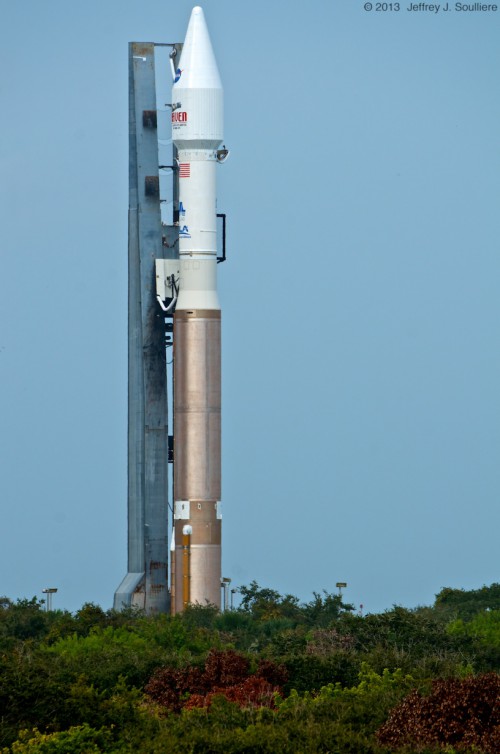
When launched, the Atlas-V—flying in the 401 configuration with no solid rocket boosters—will thunder away from Earth on 860,000 pounds of thrust from its twin bell Russian Energomash/Pratt & Whitney RD-180 engine, giving MAVEN the energy it needs for the half-billion mile, 10-month journey to Mars.
On Oct. 29 teams rolled the rocket out to its launch pad and performed a full countdown dress rehearsal, fueling the vehicle and verifying that both the Atlas-V first stage booster and its upper stage Centaur engine are ready to fly. The launch countdown test, with the rocket fully loaded with liquid hydrogen, liquid oxygen, and RP-1 fuel, went as expected and ended at T-0 with no problems reported.
The rocket’s first stage booster was hoisted vertical inside SCL-41′s Vertical Integration Facility on Oct. 11, and the rocket’s upper stage Centaur was hoisted atop the core booster on Oct. 14. A Combined Systems Test, which is an electrical test of the rocket, was conducted Oct. 22 with no problems reported.
The spacecraft itself has already passed numerous tests, and even more reviews, as the clock ticks toward launch day. Thorough tests of software and hardware systems, inspection, and cleaning of the solar panels, verification tests of the various spacecraft subsystems and payloads, and readiness reviews have all been completed. On Oct. 22 engineers and technicians performed a dry spin test on the spacecraft, rotating MAVEN up to 10 times per minute to verify that the spacecraft is properly balanced as it spins during initial mission activities. A few days later, on Oct. 25, the spacecraft was fueled with 431 gallons of highly toxic hydrazine, which MAVEN will use as a propellant for control and trajectory adjustments during its 10-month journey, or “cruise phase,” to the Red Planet.
MAVEN will only actually need very little of its fuel for the cruise phase itself, as thrusters on the spacecraft will only fire to adjust MAVEN’s flight path during the cruise and approach phases of the flight. Most of the fuel will be conserved for MAVEN’s arrival at Mars in September 2014, when it will need most of that 431 gallons to place itself into position for orbit insertion and to perform orbital correction maneuvers once at Mars. The fuel will also help MAVEN maintain a correct elliptical orbit throughout the mission and will boost the satellite into a higher elliptical orbit at the end of its mission to relay data from other spacecraft (including the Curiosity and Opportunity rovers) currently exploring the surface of the Red Planet.
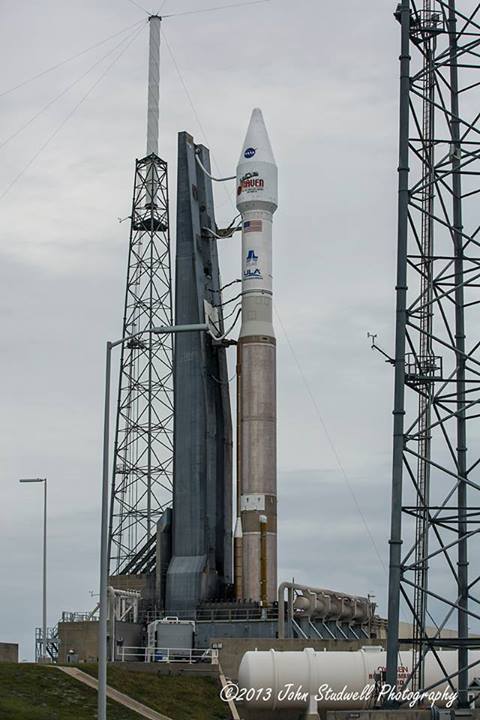
MAVEN will have its first chance to launch on Nov. 18 at 1:28 p.m. EST, with a two-hour launch window available on each day during a three-week launch window. Weather forecasts currently call for a 60 percent chance of favorable conditions at T-0 Monday afternoon, with the main concern being cumulus clouds and isolated showers.
The weather outlook for Tuesday and Wednesday is not favorable for launch, with a 60 percent chance of weather violating launch commit criteria as a cold front pushes across the state, bringing with it thunderstorms and strong winds.
Once launched, MAVEN will take 10 months to push through the emptiness between our worlds, arriving at Mars on Sept. 22, 2014 (assuming MAVEN launches on Nov. 18). It will take five weeks for the spacecraft to get into its final science-mapping orbit, test the instruments, and test science mapping sequences. MAVEN will then be ready to begin its one-Earth-year primary mission.
NEXT STOP, MARS
“We have a three-week launch window that starts on Nov. 18. If we miss that window we have to wait another 26 months, so you can imagine the team is working really hard to be ready,” said Bruce Jakosky, principal investigator for MAVEN at the Laboratory for Atmospheric and Space Physics at the University of Colorado Boulder. “Hopefully we will launch during the first minute of the first day.”
MAVEN will help answer questions about how, when, and why the Red Planet’s atmosphere has nearly disappeared, leaving the planet a dead, dry, desolate landscape. MAVEN, however, will not land on the surface, but will instead position into an elliptical orbit around Mars to—for the first time—thoroughly study the Martian upper atmosphere by measuring the current rate of escape of atmospheric gas to space. Those measurements will provide information about the relevant processes to allow extrapolation backward in time to determine how much of the Martian atmosphere has been lost over the eons.
“A better understanding of the upper atmosphere and the role that escape to space has played is required to plug a major hole in our understanding of Mars,” added Jakosky. “We’re really excited about having the opportunity to address these fundamental science questions. MAVEN is not going to detect life, but it will help us understand the climate history of Mars, which is the history of its habitability.”
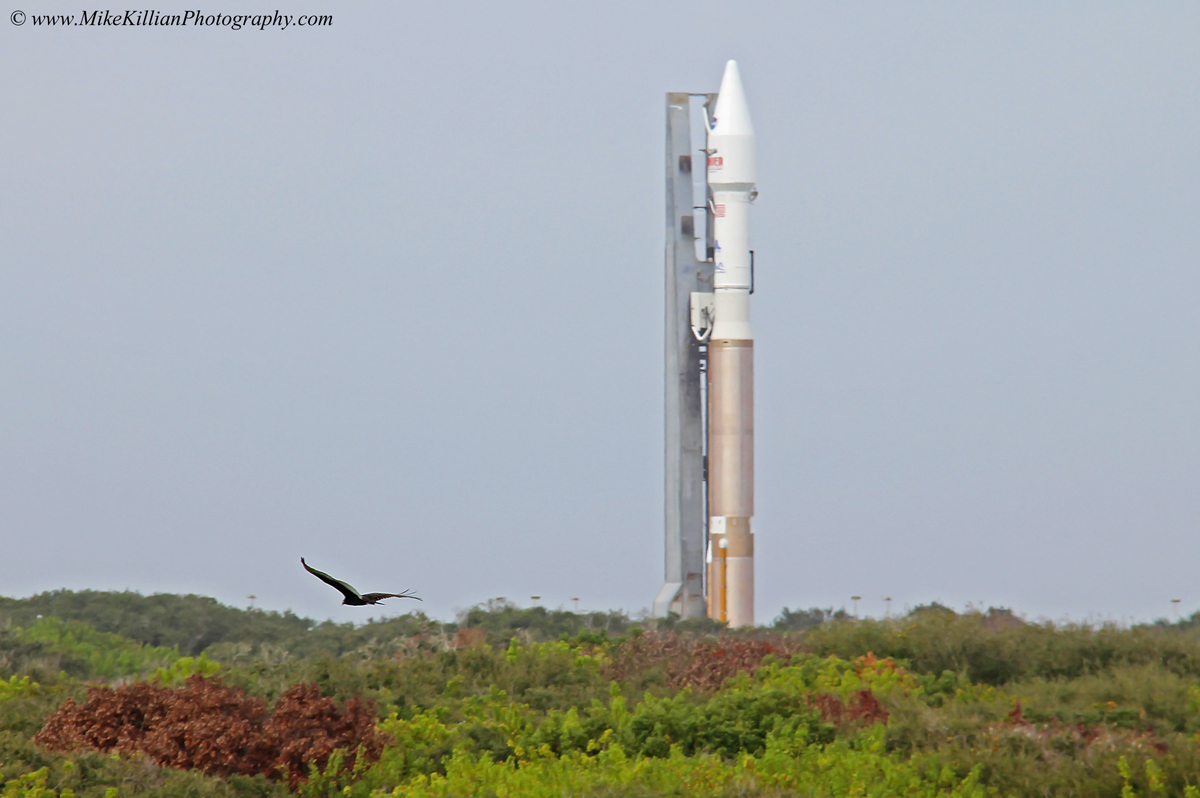
At its closest point to the planet, the spacecraft will be 93 miles above the surface, allowing MAVEN to sample the gas and ion composition of the Martian upper atmosphere directly on each orbit. Five “deep dives” are planned to place MAVEN even closer to the surface (77 miles), which will provide information down to the top of the well-mixed lower atmosphere, giving scientists a full profile of the top of the atmosphere. At its highest point MAVEN will be more than 3,728 miles above the surface, allowing for ultraviolet imaging of the entire planet.
“MAVEN is going after something the others haven’t,” said David Mitchell, MAVEN’s project manager for NASA’s Goddard Spaceflight Center in Maryland. “It’s going to look at the current composition of the upper atmosphere and how solar storms and other factors changed the atmosphere. We’ll then be able to project back in time to see how it was in an earlier epoch. Scientists believe the planet has evolved significantly over the past 4.5 billion years. It had a thicker atmosphere and water flowing on the surface. It wasn’t like Earth, but it was not like it is today.”
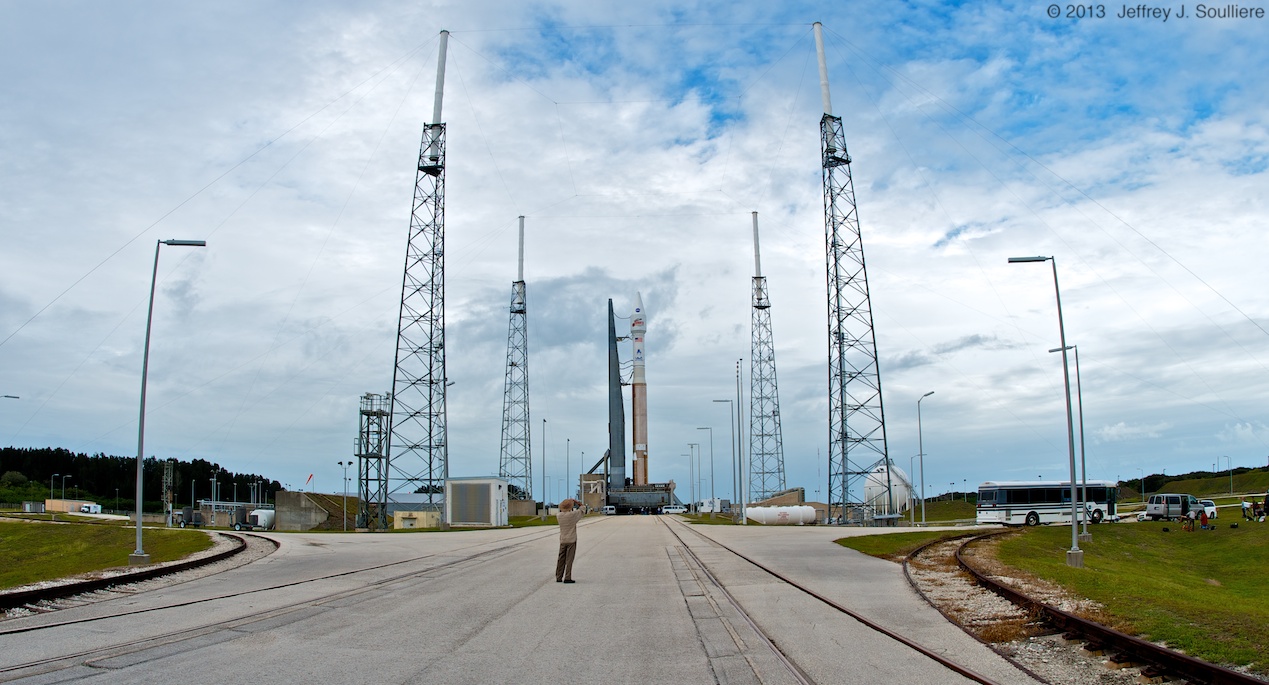
MAVEN will join three other NASA spacecraft currently orbiting the Red Planet on their own missions (Mars Odyssey, Mars Express, and the Mars Reconnaissance Orbiter). Two other vehicles are currently exploring the surface: the rovers Opportunity and Curiosity. All six spacecraft will work to do their own part in piecing together the puzzle of Mars’ history, helping to answer questions about water, habitability, and—ultimately—whether or not life ever had a chance to thrive before the atmosphere withered away and sterilized the planet.
“There’s something about going to another planet that’s very exciting,” Mitchell said. “When you’re talking about going to Mars, it isn’t hard to get great people to come work the job. And, ultimately, the mysteries that MAVEN will help decipher should be a treasure trove for the science community.”
– Want to keep up-to-date with all things space? Be sure to “Like” AmericaSpace on Facebook and follow us on Twitter: @AmericaSpace
BELOW: Photo Gallery from Saturday’s MAVEN / Atlas-V roll out. ALL photos credit: Mike Killian, John Studwell, and Jeffrey Soulliere
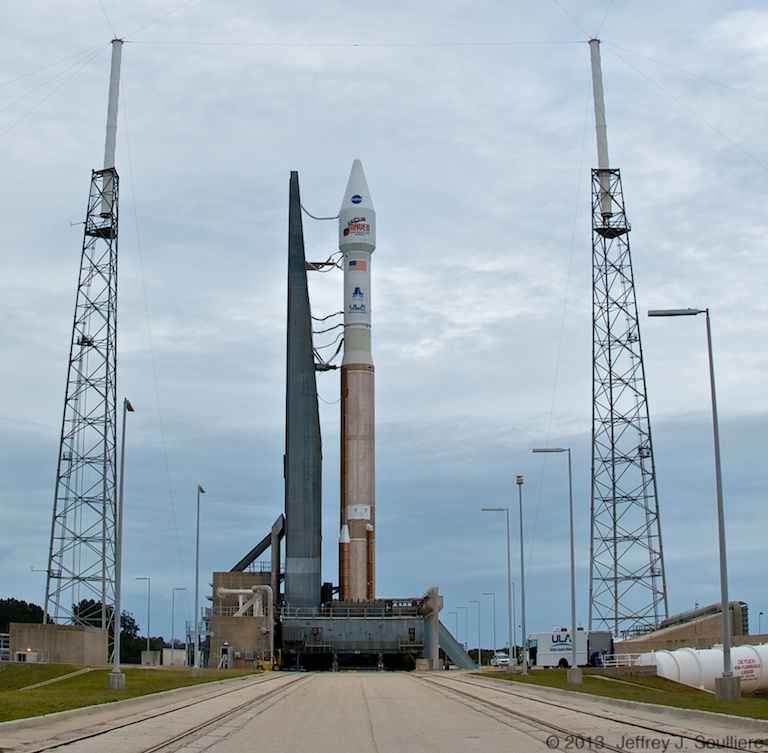
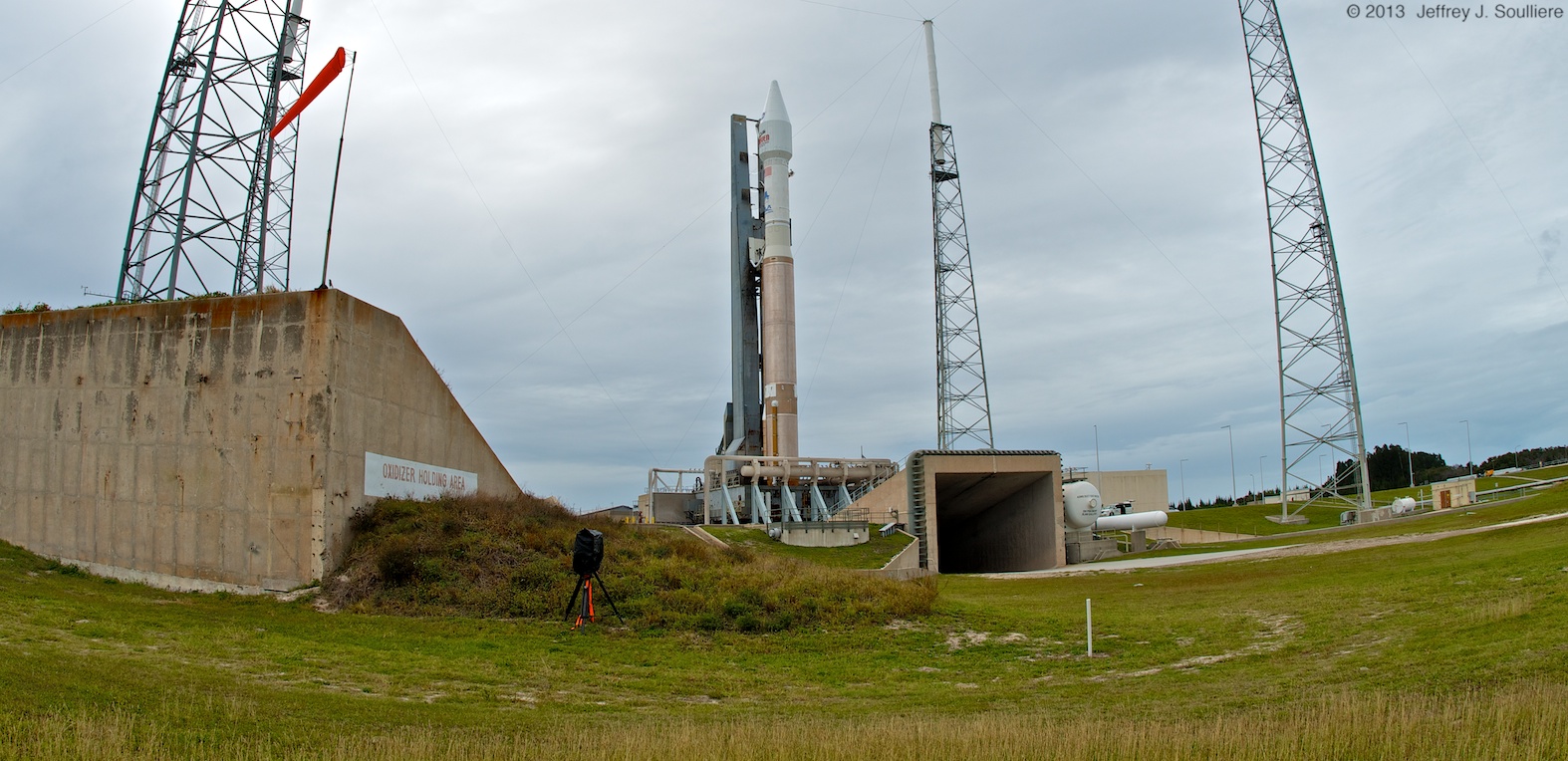
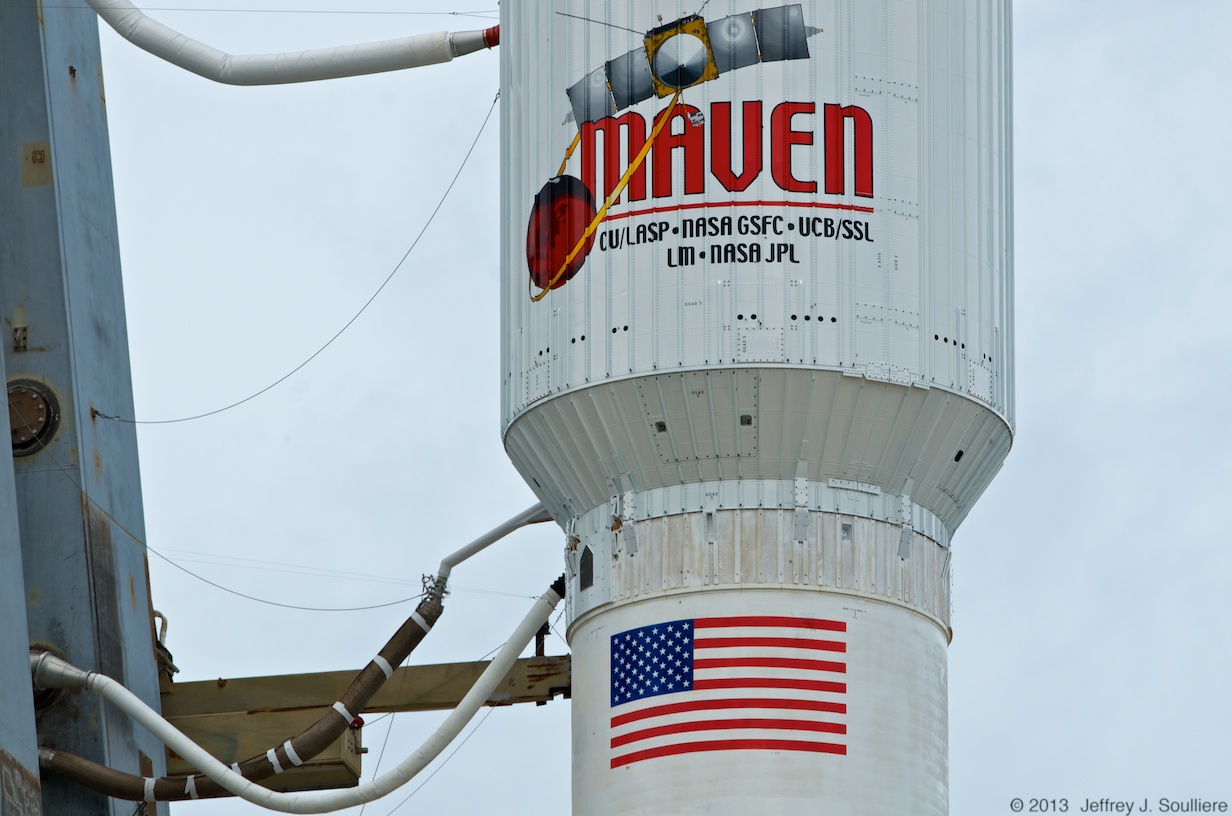
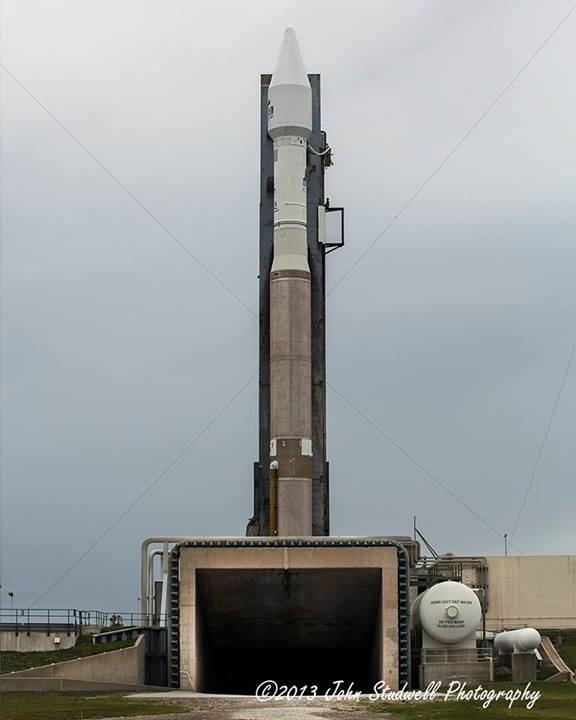
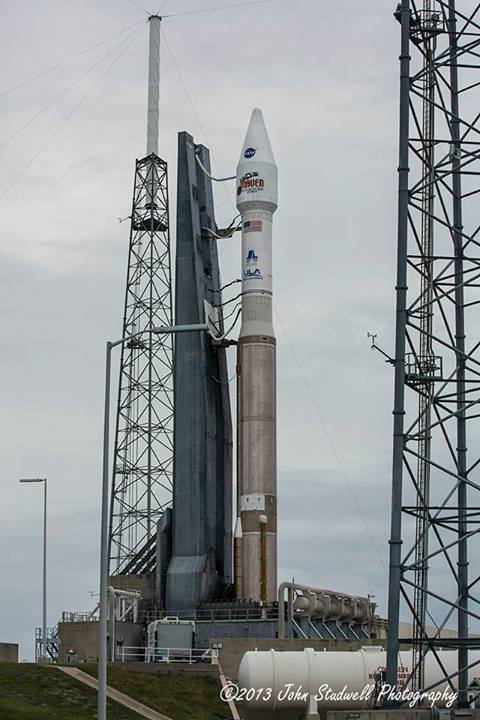
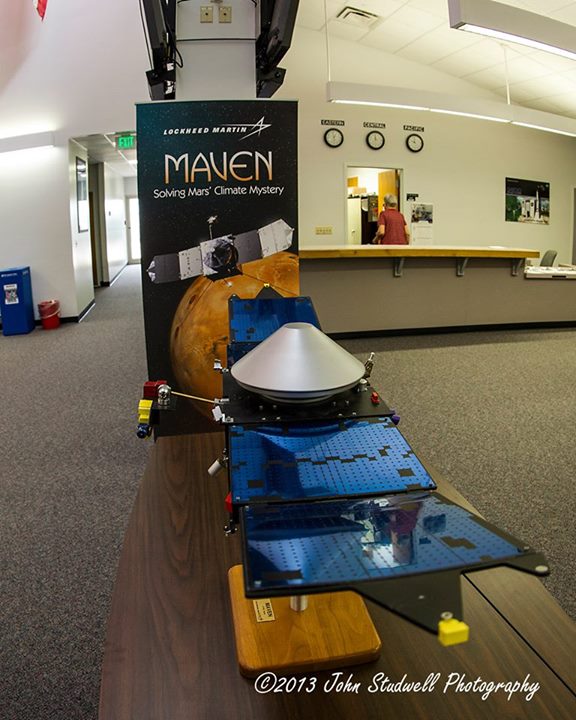
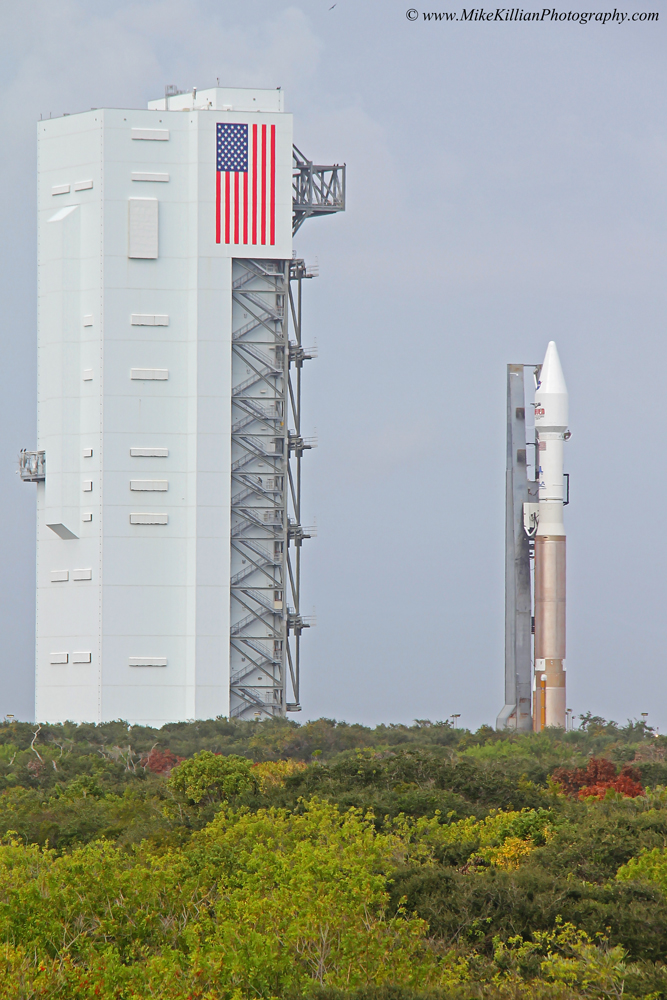
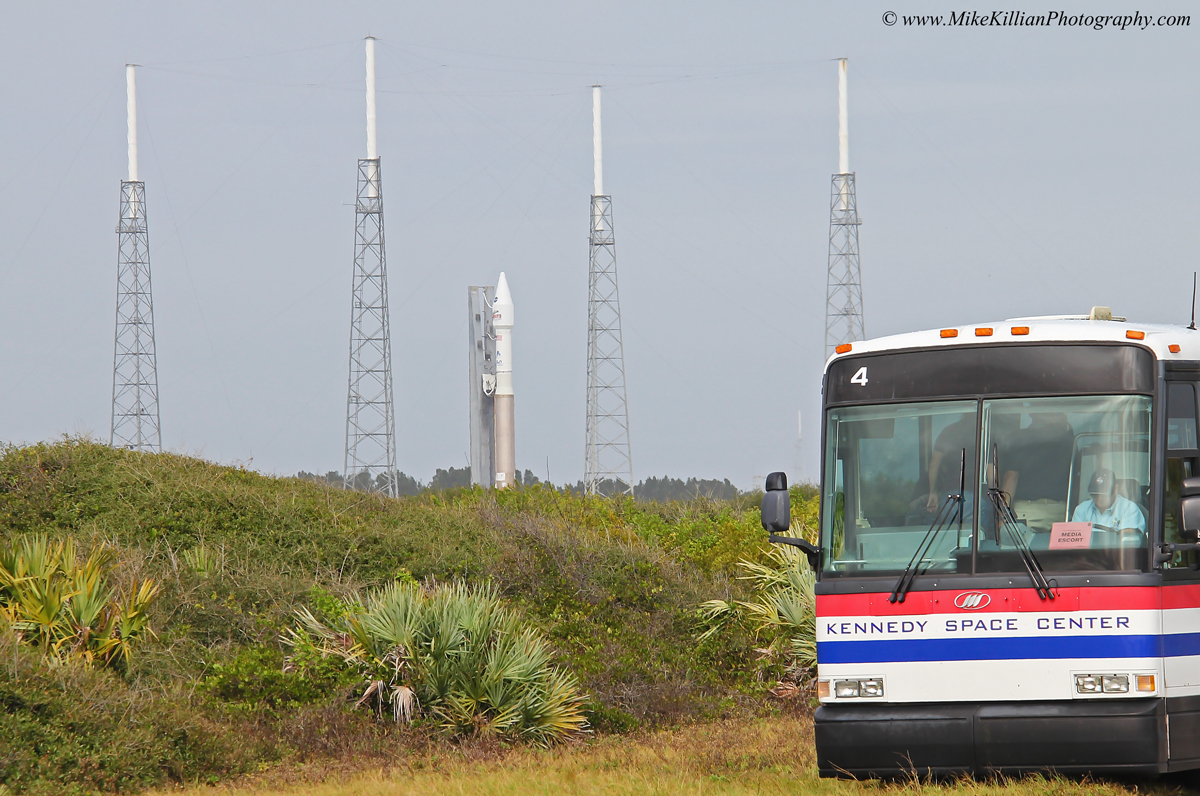
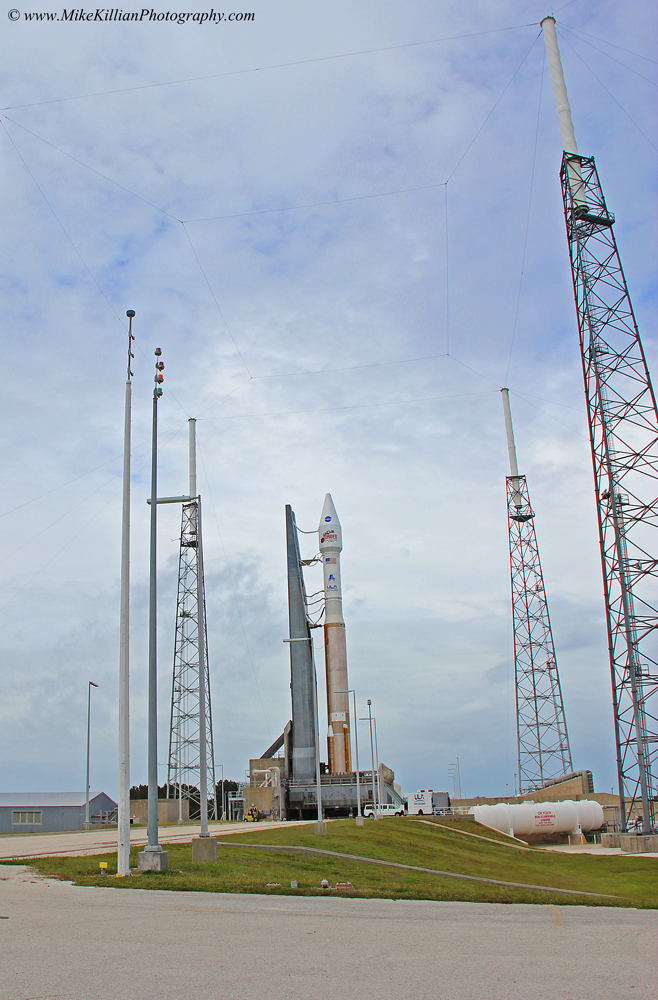
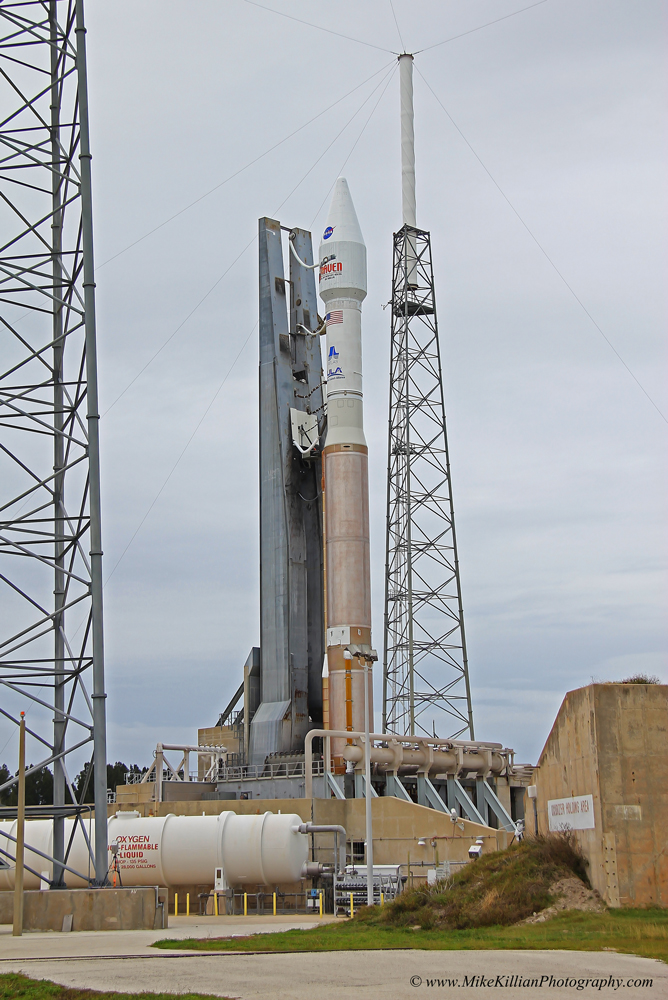
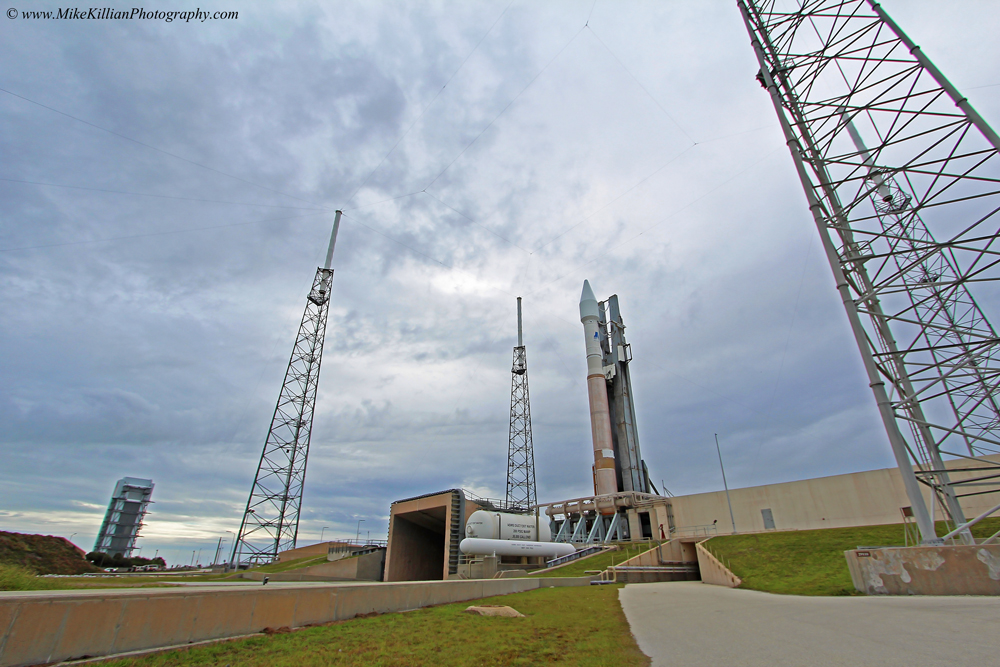
Missions » MAVEN »



